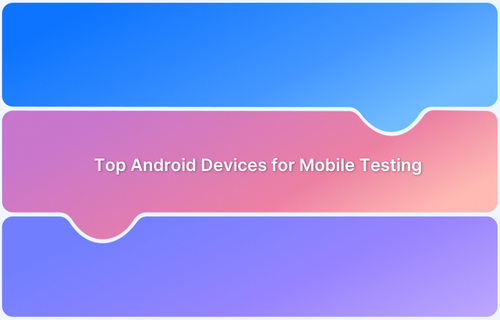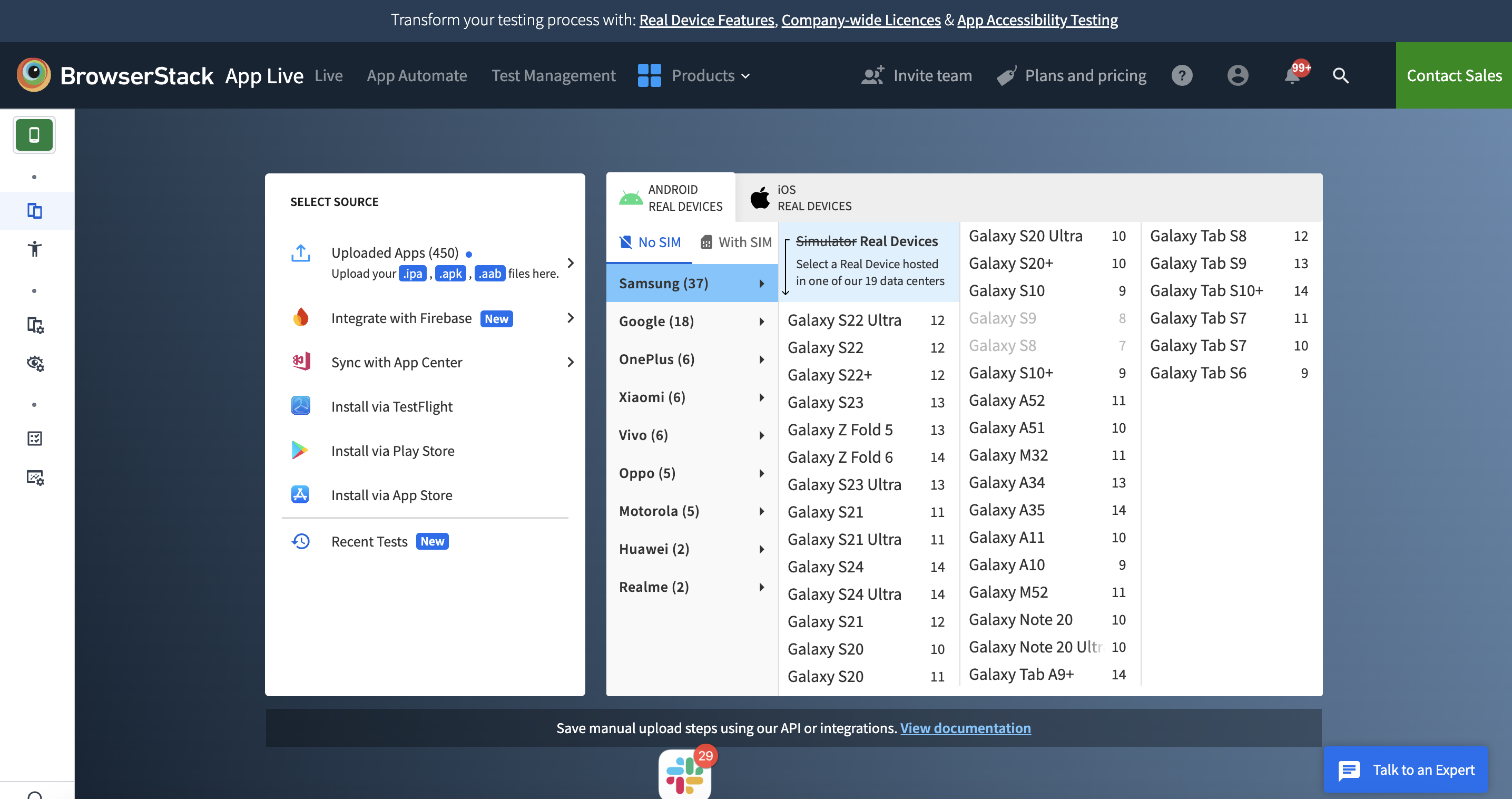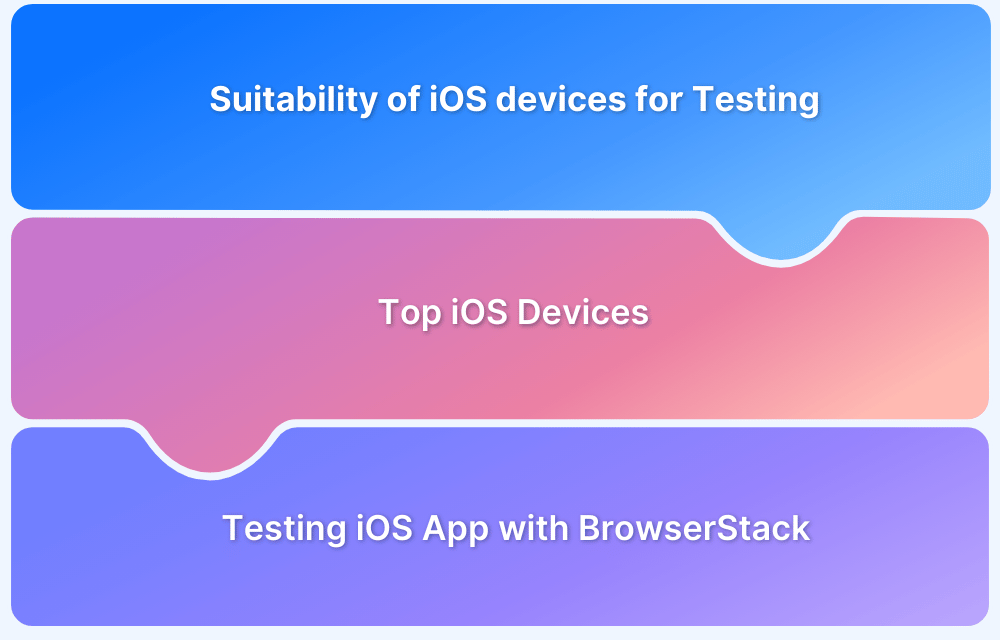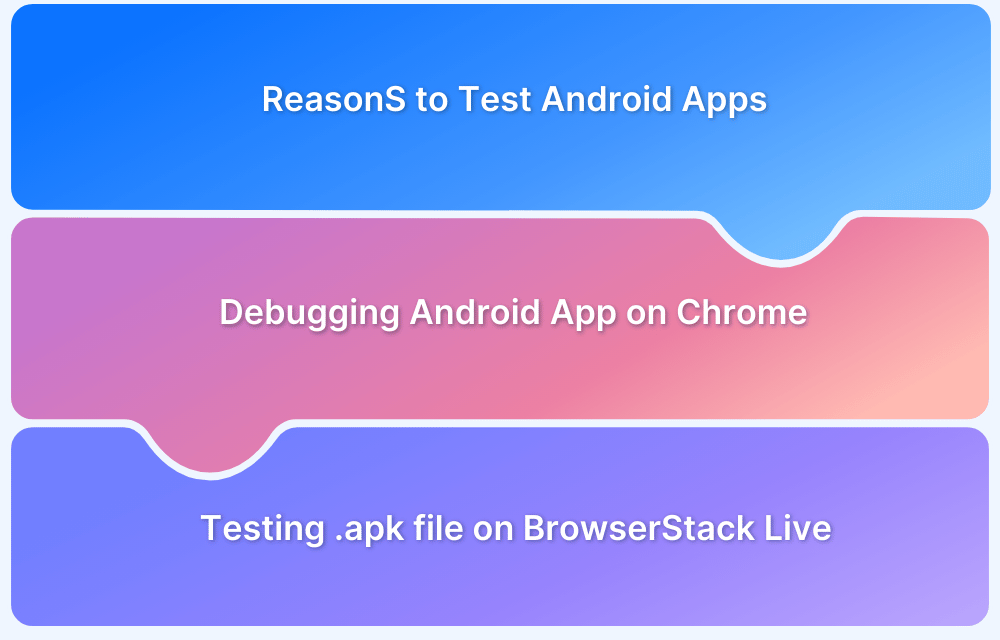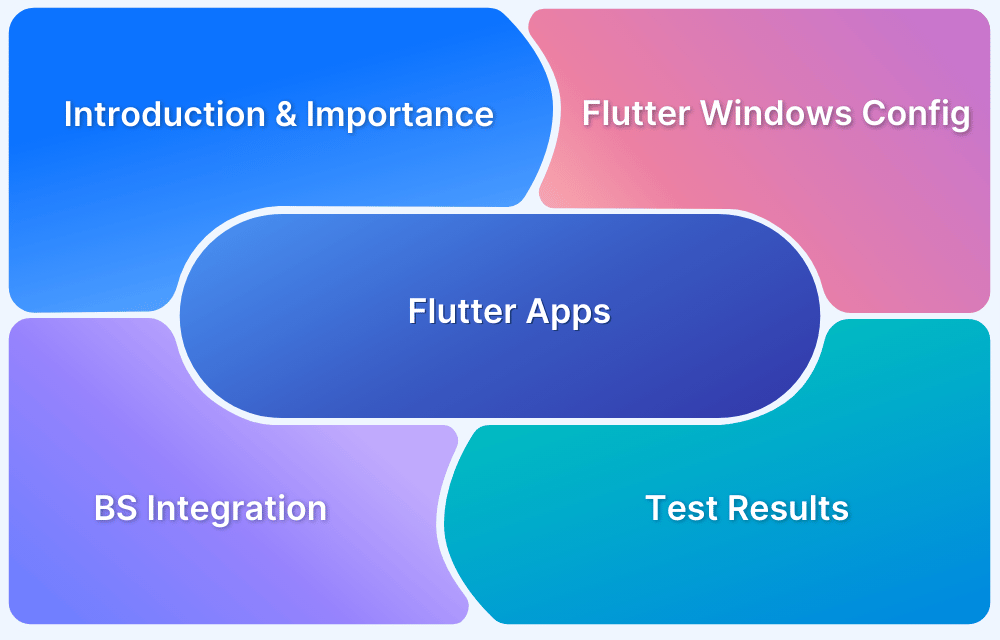With more Android devices launched in the market, it becomes crucial to keep track of them to test and find bugs in Android apps. The market share of Android devices has been increasing for the past years. Android users make up ~73.52% of the existing users.
Many companies like Xiaomi, Samsung, OnePlus, Google, etc manufacture mobile devices that make up a significant share of Android devices.
Let’s check out the highly recommended and top Android devices to test your mobile apps
Why is Android so popular?
Android is a product of Google and is the dominant platform in most countries. Most smartphones use the operating system, and the primary reason is its cost-effectiveness. According to Statcounter, the global market share of Android in July 2022 is:
- Android: 73.52%
- iOS: 26.01%
iOS fails to surpass Android in capturing a significant market share because of the cost of iPhones that use iOS software. Most countries have far less disposable income and can only afford Android phones, with many more smartphone choices across different price ranges.
- Another reason is that Google Play Store has many more apps than Apple App Store.
- Android devices span a more extensive range of prices compared to iOS devices. This makes it a very attractive choice for mobile users.
- Android has more compatibility with other devices like wearables and peripheral devices compared to iOS
- Android provides a greater variety of devices to choose from.
Read More: Dealing with Android Device Fragmentation
That being said, Apple holds a higher standard in terms of its software and hardware integration and performance, which is all under Apple. Whereas for Android, Google maintains the software, and OEMs manufacture the hardware. Due to this, the integration isn’t as good as Apple, and the quality is also compromised. That makes Android much cheaper, and Android devices are consumed more in developing countries.
Factors to choose Top Android Phones for Development Testing
Apart from testing on these top Android devices, it’s necessary to cover a larger range of devices to truly capture the mobile app market. But the high costs of maintaining a mobile device farm can be costly for many.
How can one converge to a handful of devices from almost hundreds of devices available for Android device testing?
Here are few factors to consider when choosing top Android devices for Testing:
- Region: The popularity of devices depends on your target area. For example, due to affordability, Android devices in the US may not be as popular as in developing Asian countries. So check which devices are most popular in your region first.
- Brand Popularity: Some devices are popular just because of their brand. OnePlus has significantly increased its market share and is a notable brand today. Users also look at the brand value while selecting their mobile devices, so, note the most popular brands and select devices to test from them.
- Manual vs Automated Testing: For manual testing, it is recommended to test on one high-end, one low-end, and a tablet device from a popular brand like Samsung. More brands can also be added for coverage and the latest Google Pixel phones for Android beta versions. Since automated testing can be tested with more coverage, the same device test strategy can be used with more OS versions.
- Reassess Device List: Since newer devices are constantly being launched, testers should keep updating their device list periodically to build an effective device matrix for app testing.
- Target Users: It is worth knowing about your target users and their preferred devices. One can get this information through external sources, or usually, QA can team up with marketing to know about the usage patterns of the target audience. This helps them to narrow down a selected list of devices.
Top Android Devices To Test On
Here is the list of best Android devices to test apps and the various features that make them the top contenders in the market.
Best Android Devices for Mobile App Testing
1. Galaxy S24
- OS – Android 14.0
- Screen Size: 6.1 inches
- Resolution: 2340 x 1080 pixels
- Viewport: ~360 x 800 px (variable depending on UI and content)
- Aspect Ratio: 19.5:9
2. Galaxy Z Fold 6
- OS – Android 14.0
- Screen Size: 7.6 inches (main foldable display) / 6.2 inches (cover display)
- Resolution: 2208 x 1768 pixels (main display) / 2316 x 904 pixels (cover display)
- Viewport: ~370 x 800 px (variable based on folding state)
- Aspect Ratio: 21.6:18 (main) / 25:9 (cover)
3. Galaxy S24 Ultra
- OS – Android 14.0
- Screen Size: 6.8 inches
- Resolution: 3088 x 1440 pixels
- Viewport: ~390 x 850 px (variable depending on UI and content)
- Aspect Ratio: 19.3:9
4. Pixel 9
- OS – Android 16.0 (Beta) and 15.0
- Screen Size: 6.0 inches
- Resolution: 2340 x 1080 pixels
- Viewport: ~360 x 800 px
- Aspect Ratio: 19.5:9
5. Pixel 9 Pro
- OS – Android 15.0
- Screen Size: 6.7 inches
- Resolution: 3200 x 1440 pixels
- Viewport: ~390 x 850 px
- Aspect Ratio: 20:9
6. One Plus 12R
- OS – Android 14.0
- Screen Size: 6.7 inches
- Resolution: 2772 x 1240 pixels
- Viewport: ~380 x 820 px
- Aspect Ratio: 20:9
7. One Plus11R
- OS – Android 13.0
- Screen Size: 6.74 inches
- Resolution: 2772 x 1240 pixels
- Viewport: ~380 x 820 px
- Aspect Ratio: 20:9
8. Vivo V30
- OS – Android 14.0
- Screen Size: 6.78 inches
- Resolution: 2400 x 1080 pixels
- Viewport: ~370 x 800 px
- Aspect Ratio: 20:9
9. Vivo Y100
- OS – Android 13.0
- Screen Size: 6.38 inches
- Resolution: 2400 x 1080 pixels
- Viewport: ~370 x 800 px
- Aspect Ratio: 20:9
10. Oppo A78
- OS – Android 13.0
- Screen Size: 6.43 inches
- Resolution: 2400 x 1080 pixels
- Viewport: ~370 x 800 px
- Aspect Ratio: 20:9
11. Galaxy A35
- OS – Android 14.0
- Screen Size: 6.4 inches
- Resolution: 2400 x 1080 pixels
- Viewport: ~370 x 800 px
- Aspect Ratio: 20:9
12. Redmi Note 13 Pro 5G
- OS – Android 14.0
- Screen Size: 6.73 inches
- Resolution: 2712 x 1220 pixels
- Viewport: ~380 x 820 px
- Aspect Ratio: 20:9
13. Redmi Note 12 4G
- OS – Android 13.0
- Screen Size: 6.67 inches
- Resolution: 2400 x 1080 pixels
- Viewport: ~370 x 800 px
- Aspect Ratio: 20:9
14. Motorola Edge 50 Fusion
- OS – Android 14.0
- Screen Size: 6.7 inches
- Resolution: 2400 x 1080 pixels
- Viewport: ~370 x 800 px
- Aspect Ratio: 20:9
15. Motorola Edge 40 Neo
- OS – Android 13.0
- Screen Size: 6.55 inches
- Resolution: 2400 x 1080 pixels
- Viewport: ~370 x 800 px
- Aspect Ratio: 20:9
16. Galaxy S23
- OS – Android 13.0
- Screen Size: 6.1 inches
- Resolution: 2340 x 1080 pixels
- Viewport: ~360 x 800 px
- Aspect Ratio: 19.5:9
Your Android devices for testing should also be carefully selected on parameters such as:
- Global traffic volume of website or app from device
- Market share and popularity of devices among your users
- OS and OS versions
- Screen sizes
- Resolutions and Viewports
- Upcoming Android devices
- Launch year of Android device
- Manufacturers
Benefits of Testing on BrowserStack Android Device Cloud
By accessing BrowserStack Device Cloud, you get quick access to:
- An exhaustive range of best Android devices like Samsung Galaxy, OnePlus, Pixel, Oppo, Vivo, Redmi, Motorola, etc., running on Android 16 (Beta), Android 15.0, 14.0, 13.0, 12.0, 11.0, 10, 9, 8, 7, etc.
- Tools to debug Android apps instantly using device logs, browser console and network logs, crash logs, video recordings, and screenshots for every test.
- Local Testing allows testing native, hybrid, and mobile apps on internal dev and staging environments.
- Parallel testing lets teams release Android builds faster by running tests concurrently across devices. Using this feature reduces test execution time by more than 10x.
Your QA team can monitor Android app performance and efficacy on real devices without collecting or maintaining any device labs with BrowserStack cloud infrastructure. You can even update the app settings as per your testing requirements with the latest features, such as testing biometric authentication, camera, and device passcode.
Try App Live for Android Device Testing
Conclusion
Android is here to stay, and more and more devices will be built into this popular ecosystem. It is just a matter of identifying the popular devices consumers use because that is where your application must run. It is also worth noting that ensuring your app runs within an operating system is insufficient. Still, it is also essential to be compatible with further operating system versions. So it is an iterative process to keep applications up to date with newer and newer models getting added to the market.
